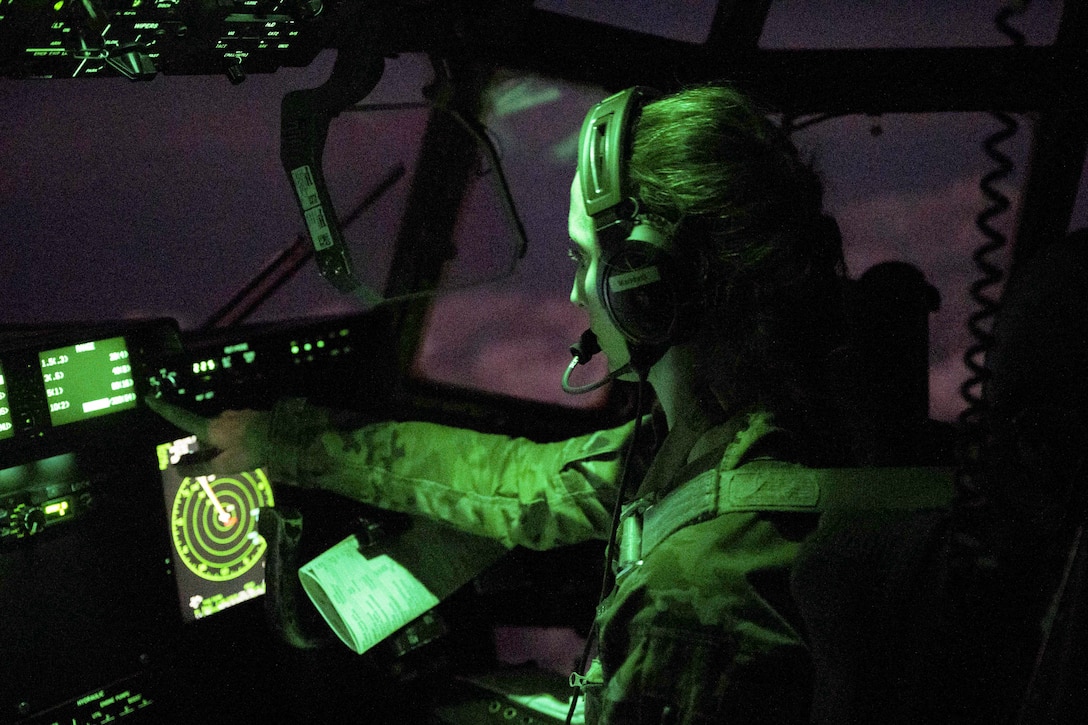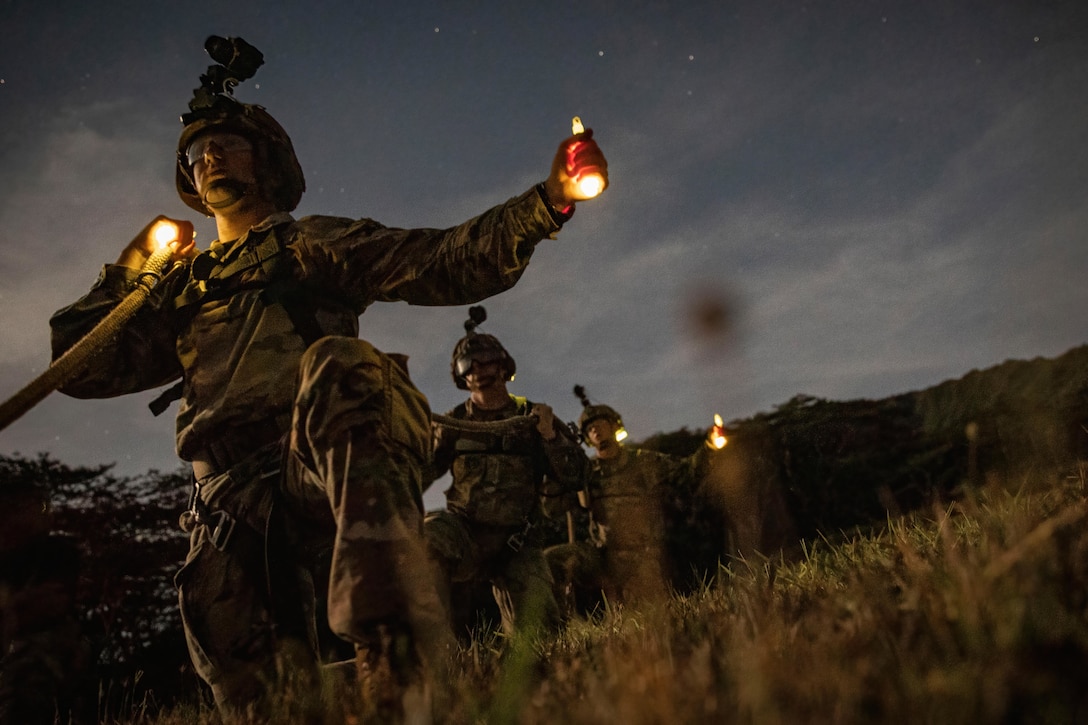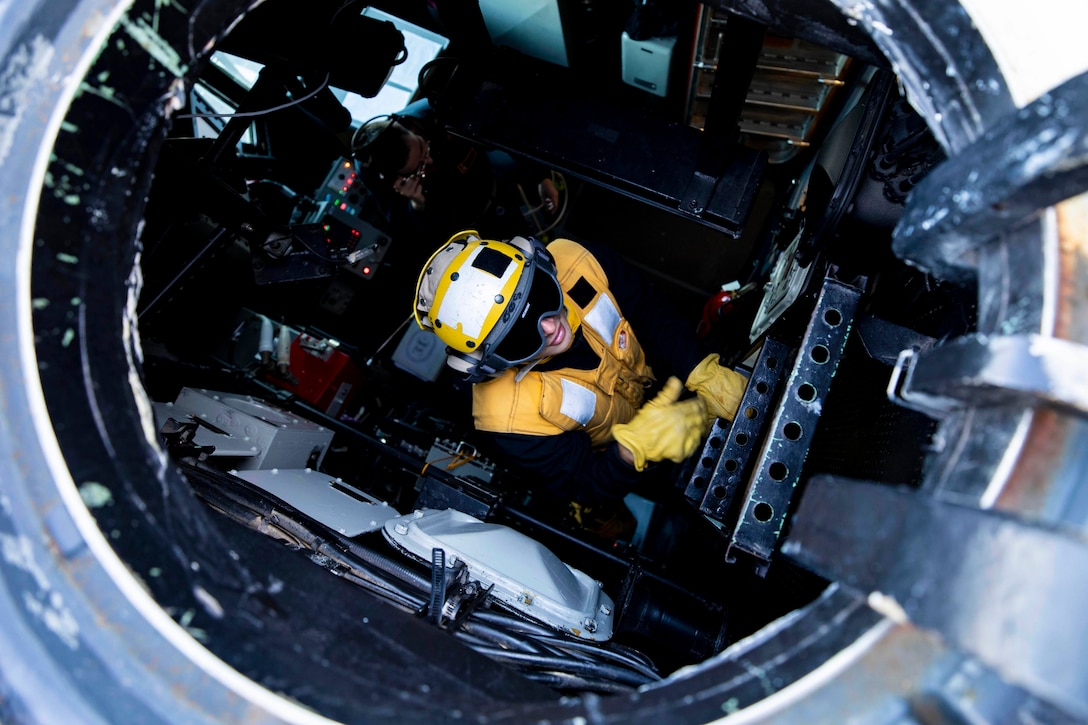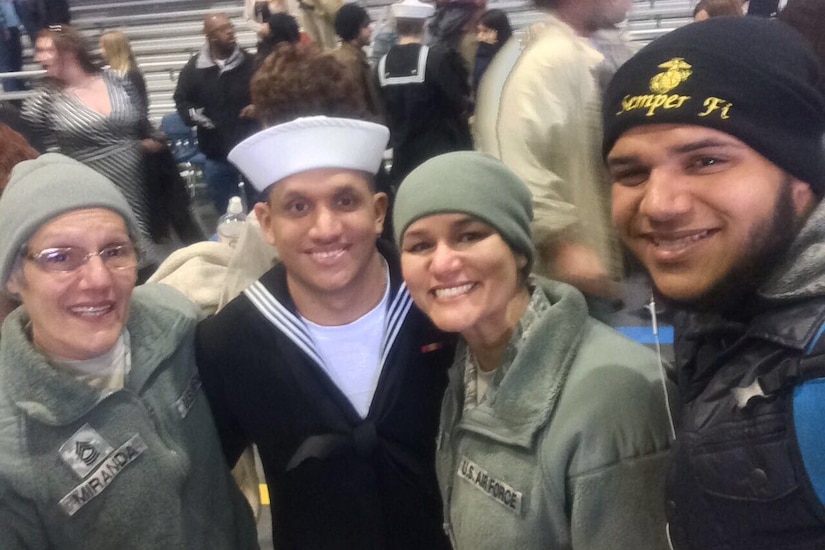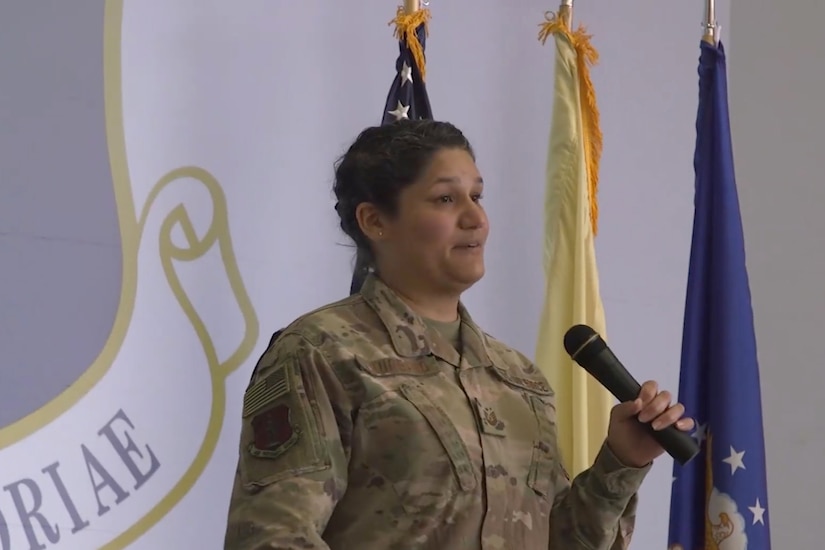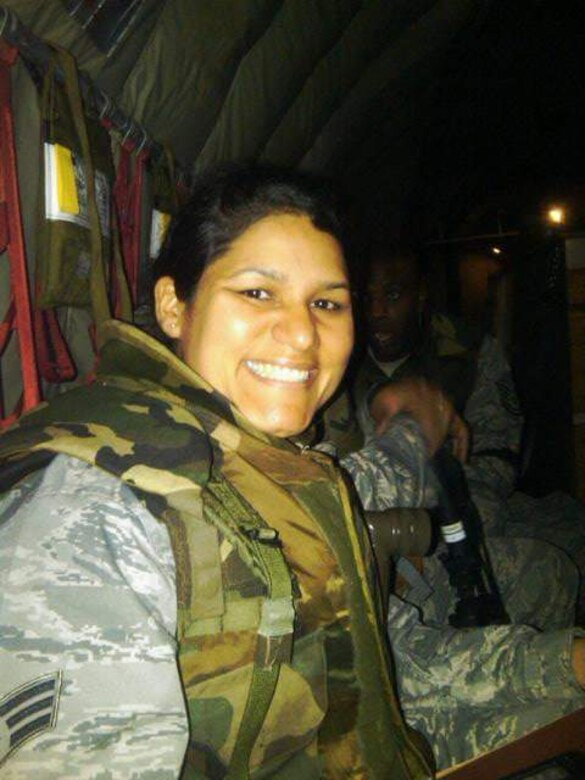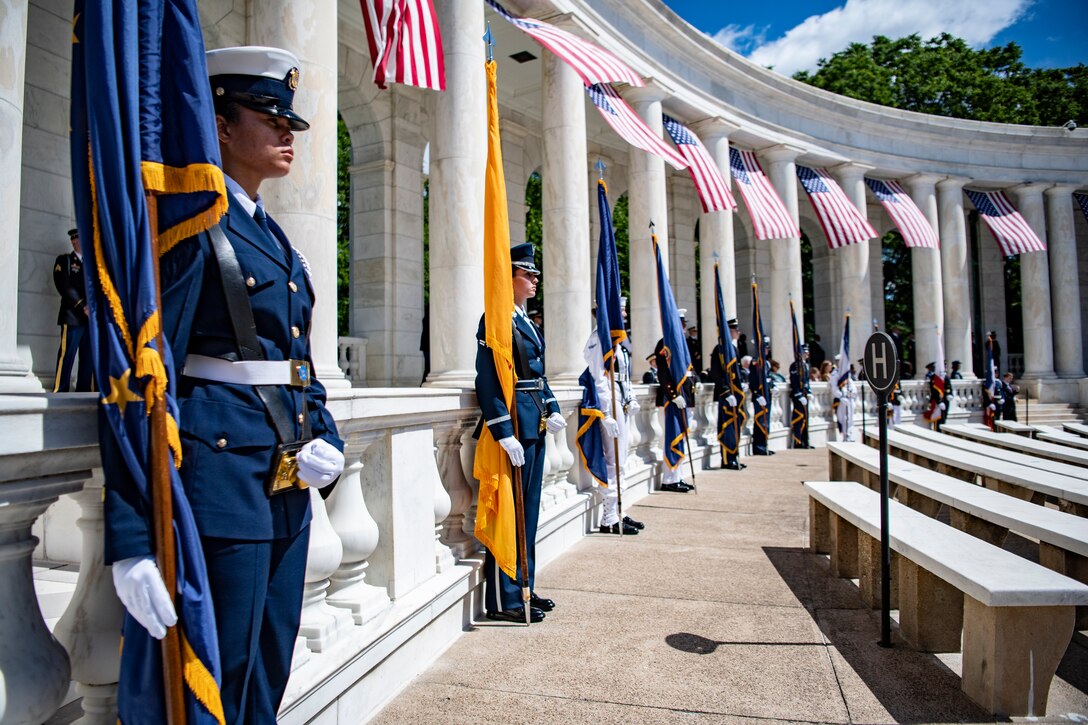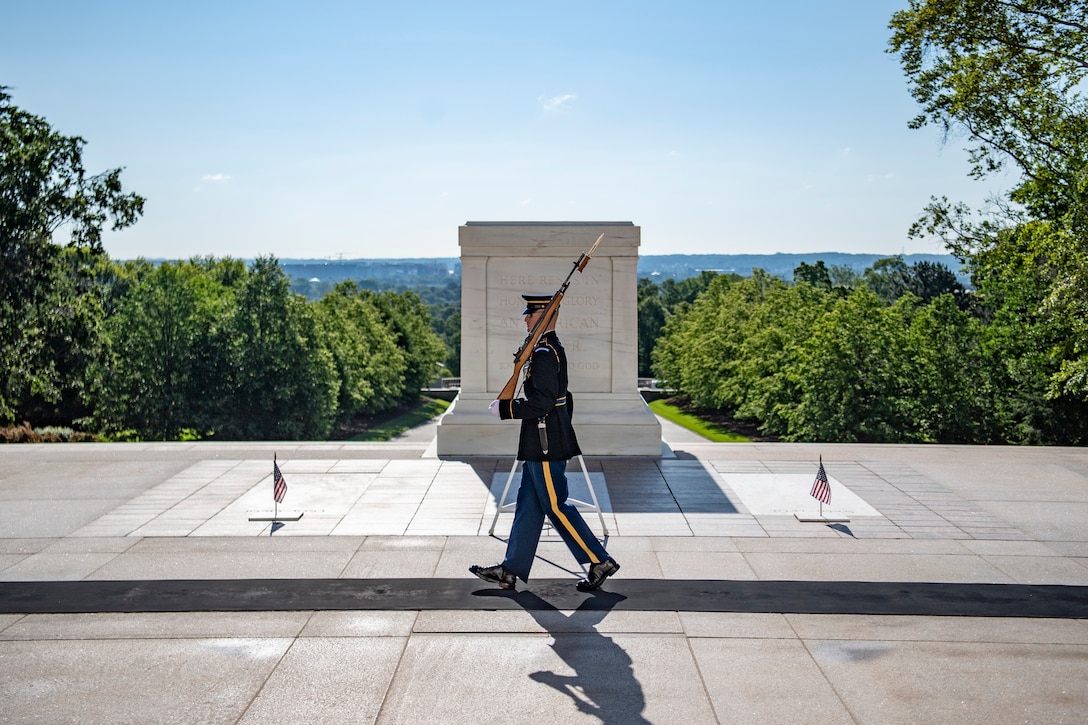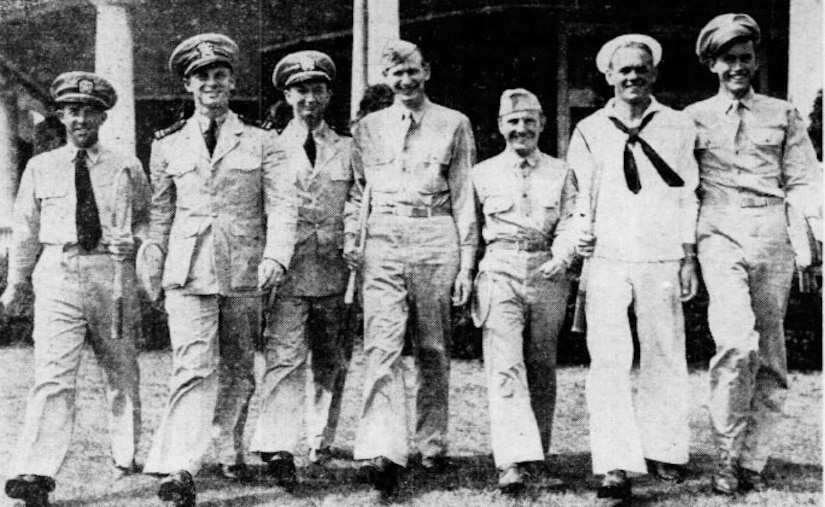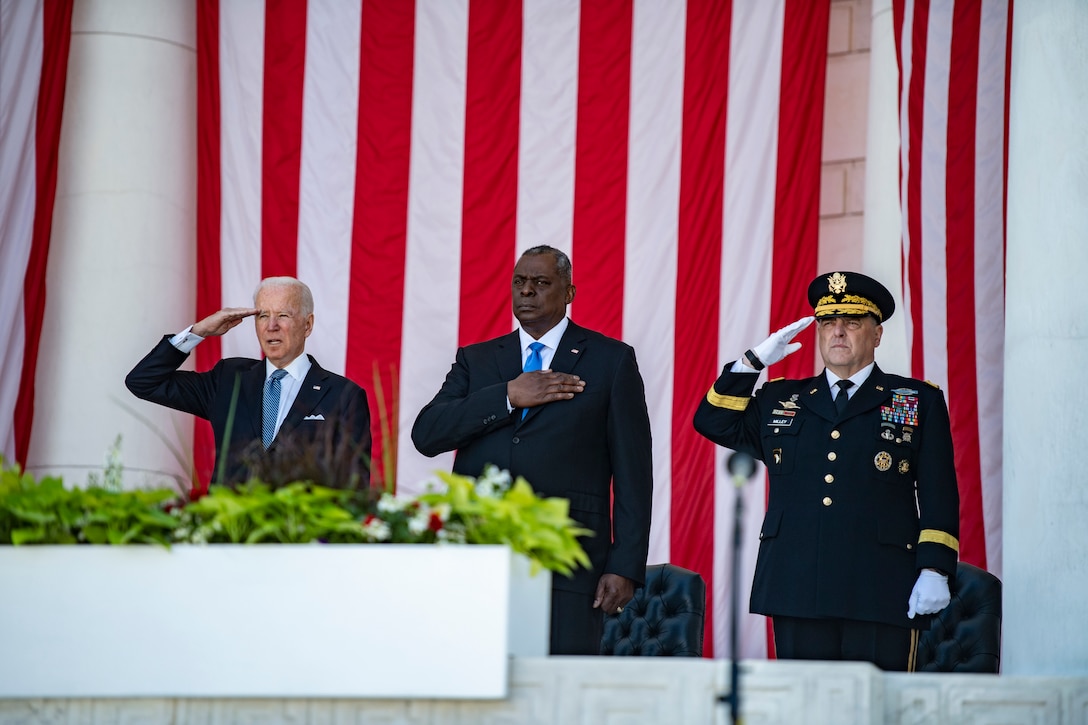June 1, 2021
PRESS SECRETARY JOHN F. KIRBY: Hey everybody.
MR. KIRBY: Sorry I'm a few minutes late, and I think Brook told you I do have a hard stop here. The room is reserved for other purposes this afternoon so I'll try to make – I'll try to get this going. I do have, unfortunately, I got some things at the top I definitely want to hit. So, bear with me, lot's of different topics.
Onboarding of personnel this morning, the Secretary swore in two new Under Secretaries of Defense right upstairs. Michael McCord as the Under Secretary of Defense Comptroller, and Ronald Moultrie as the Under Secretary of Defense for Intelligence and Security. Both were confirmed, I think you know, by the Senate last week. And today we also onboarded Mela Louise Norman as the Deputy Chief of Staff to the Secretary, so that brings our total to 119 DOD appointees onboarded since January 20th, and it also fills 12th of the Department's 61 political appointments.
So we look forward to continuing to work with Congress to confirm President Biden's nominations and continue to flesh out the team. We're grateful for the service of these individuals and their willingness to come into government to do this very important work.
Today as I think you know kick's off Pride Month. The Secretary is very proud to celebrate and honor the service, commitment, and sacrifice of our LGBTQ personnel in and out of uniform. He's proud that one of his first actions after being sworn in was to implement President Biden's directive to ensure that all transgender individuals who wish to serve and can meet the appropriate standards to be able to do so openly and free from discrimination.
At the direction of Secretary Austin the Department has also taken a concerted action to promote and protect the human rights of LGBTQ persons around the globe. The Secretary remains committed to of course building a diverse, equitable, and inclusive force and over the course of the month the Department will celebrate the rich contributions of LGBTQ personnel.
On schedule this Thursday, the Secretary will host Israeli Minister of Defense, Benjamin Gantz, for his first counterpart visit here in person at the Pentagon. We'll have more detail as we get closer to Thursday and be able to provide that to you later on.
On exercise, Defender Europe 2021 continues as a part of field artillery exercises called Fire Shock, the U.S. Army's 41st Field Artillery Brigade joined exercise Saber Guardian. And the unit quickly deployed to Bulgaira, conducted a live fire, and returned to their home station in Germany. And the Defender Europe '21 Post Exercise began today as well. This exercise includes approximately 2,000 personnel and will demonstrate the ability to command multi-national forces in a joint and combined training environment.
Formidable Shield '21 wraps this week, also a part of Defender Europe. The NATO and Air Missile Exercise began on the 15th of May, Formidable Shield exhibits ally interoperability in a live fire joint environment using NATO command and control reporting structures. The exercise was sponsored by the Navy's 6th Fleet and conducted by Naval striking and support forces. Support forces NATO remains underway on the western isles of Scotland and off Norway and in the North Atlantic. Fifteen ships, nearly 50 aircraft and more than 3,000 service members from 10 nations are participating.
In other EUCOM news, European command news, yesterday as a part of a bomber task force rotation, U.S. Air Force Strategic aircraft conducted operation Allied Sky by flying over every NATO allied nation in Europe in a single day. B-52H Stratofortress aircraft currently deployed to Moron Airbase in Spain integrated with several allied aircraft during the operation. While we're talking about NATO, today the Secretary participated virtually in a NATO defense ministerial hosted by the Secretary General, General – Secretary General Stoltenberg. Alliance defense members met to prepare for the June 14th NATO summit and focused on strengthening the alliances, deterrence, and defense.
We'll have a much more detailed readout of that meeting, just wrapped up within the last hour or so, so we'll have a much more detailed readout for you later this afternoon.
And finally to note some sad news that I know that you all are familiar with, we'd here at the Pentagon would like to take a moment to -- to express our condolences and sympathies for the passing of Mr. Tejinder Singh, who many of you know was the founder and editor of India America Today.
He was a Pentagon Correspondent since 2011, and I dealt with him from this podium, I've dealt with him when I was at the State Department podium, and the one word, I mean, the word one that comes to mind when you think of Tejinder is ‘gentlemen.’ He was a real gentlemen, good reporter, damn good reporter. Asked tough questions and produced good stuff, but he was a heck of a man and a – and a – and a – gentlemen as I said. And we're going to miss him, we're all going to miss him, and I know you guys feel the same way.
OK. Well that's a sad note to end the toppers but I though it was important to say so we'll get to questions.
Lita.
Q: Hi, thanks (inaudible). Just two quick things, one, you mentioned Mister Gantz coming in. I saw something -- is this somebody (inaudible) do you have any other sort of guidance on some of the things that they may be talking about? And just a quick other thing, do you know if Secretary has gotten the (inaudible) this (inaudible) from the services on the thoughts -- the Secretary's thoughts, (inaudible) changes, can you talk about when we might see or hear something from the Secretary on that? Are we clear?
MR. KIRBY: Yes. Lita, can I ask you to repeat your first question because it was garbled and I didn't get it.
Q: Sure, no problem. Minister Gantz coming in later this week, can you provide any other details on whether they're going to be talking about Iran or other issues, just any other details you might be able to provide us at this point?
MR. KIRBY: Thanks, that's much clearer, I got you that time. So on the Minister Gantz, I certainly won't get ahead of the agenda of the meeting. I – I – I think it's safe to expect that among the things they will talk about are regional security issues and clearly we have every expectation that Iran and their maligned behavior in the region will certainly come up. This is obviously not the first time that the Secretary has met or spoken with Minister Gantz, they've had numerous phone calls which we've all read out to you over the last couple of weeks with his respect his respect to Gaza and of course we visited Israel not to long ago and they had a very extensive day together.
So this, we expect this Thursday's meeting to be a continuation of those discussions but clearly regional security issues will be at the top of the list.
And as for the recommendations for an independent review commission and the services reaction to those. Yes, I don't think you asked this but to confirm, the services have reported back to the Secretary about their views on the initial set of recommendations that were in the accountability line of effort. The Secretary is reviewing that feedback, again, I won't get ahead of him or his thinking on this.
But he, as he has said many times to all of you, he wants to make sure we get this right, and he wants to make sure he's keeping an open mind. And he certainly wants to make sure that whatever decisions he makes on these recommendations that it's well informed by the services and the military departments. So that's where we are literally this week. They were all turned in last week and he's reviewing them. And if and when we've got more to report out on this, certainly we will.
OK. Here in the room, Carla.
Q: Thanks. Two questions, the first one on the Iranian Naval ships that appear to be heading towards Venezuela, what more can you give on that? Do you know any more details on where they're going or what they're planning? And then also on Afghanistan, AFP is reporting that Bagram Air Base is going to be handed over to the Afghans in about 20 days this month, can you confirm that?
MR. KIRBY: On -- I seen the press report on Bagram, I'm obviously not going to get ahead of specific retrograde milestones. I mean clearly Bagram Air Base will be turned over as part of this process, but I'm not going to speculate about timing and get ahead of that for obvious operational security purposes. And as for your question on this Iranian ship, I would – I would point you to the Iranians to speak to their Naval deployments and what it is they're doing and what it is they're trying to accomplish. I won't speak to those – those matters from the podium.
Q: But you can confirm that there are two naval ships?
MR. KIRBY: I'm not going to confirm – I won't confirm, I mean I don't even get into talking about, you know, ongoing military operations of the U.S. Military, the U.S. Navy, unless it's an exercise like I topped out at the beginning there. But I won't get into speaking for another nation's naval deployments, that's really for them to speak to.
OK. Laura.
Q: General Michael Flynn appeared to endorse a Myanmar style military coup to reinstate President Trump, can you tell us what you're response is to that?
MR. KIRBY: I've seen press reports on that, Laura, and I've seen press reporting also that seemed to suggest that he -- that he was refuting those comments. I – the Department's not going to have an official comment one way on this.
Q: Just as a different question then, we just reported that the State Department is running a volunteer pilot program to get people's baseline health information before sending them overseas as part of the response to the Havana syndrome. Can you tell me if DOD is doing anything similar?
MR. KIRBY: I know no similar program here at DOD. And again, that's all -- that's a State Department thing to speak to but I'm not a, I'm not aware of any similar effort here at DOD.
Let me go back to the phones.
What is this? This is – this is Brook's wave saying I screwed something up? This is out now?
STAFF: Yes, sir.
MR. KIRBY: OK. So Central Command has released their weekly update and they estimate that they have completed between 30 to 44 percent of the entire retrograde process. They retrograded the equivalent of approximately 300 C-17 loads of material out of Afghanistan and have turned nearly 13,000 pieces of equipment over to the Defense Logistics Agency for Disposition. So there you go, thank you Brook.
And I lost my complete place, what was I on? Oh, I was going to the phones right? OK.
OK, Matt, ABC.
Q: Hi John, thanks for doing this.
MR. KIRBY: Yes, sir.
Q: A quick question on the coming UAP reports. There's been some reporting that this could be coming as soon as this week or maybe even tomorrow, can you say anything about what timing we should actually expect?
MR. KIRBY: The what report Matt?
Q: The UAP report? UFO report?
MR. KIRBY: That is really for the DNI to speak to, Matt. As you know, this is a report -- a Congressionally-mandated report, the DNI is in the lead. It will be DNI who will be making that report, obviously DoD has a role in helping flesh out the information that will be in that report, but as for specific timing I'd refer you to the DNI.
Yes, Lucas.
Q: John, China has the largest Navy in the world, why is the U.S. Navy cutting its fleet of warships?
MR. KIRBY: So, Lucas, I mean, it's not about cutting. As a matter of fact you'll see more ships added into the fleet going forward and as the services has said and as the Navy has said, certainly the Secretary agrees that the target of about 355 ships is about right going forward. And he supports that, that goal. But you – we have, you know, we have global responsibilities and we try to size and structure, build out a fleet that can meet our global responsibilities.
It's not about trying to match the – the numbers of any other particular navy out there, it's about as the Secretary has said many times, it's about matching resources to strategy, strategy to the right policy, and policy to the will of the American people. And that's what we're focused on with the budget.
Q: You say you want 355 ships but the Navy's top budget guru said building 8 ships a year is not going to get there.
MR. KIRBY: There's going to be, I mean, the Navy's working a ship building plan, I'm not going to get ahead of that, but – but – and I didn't, as I said, the Secretary believes 355 is about right in terms of a long term goal. We'll have a shipbuilding plan that we'll submit officially to Congress and we're going to need obviously support from members of Congress to help us flesh that out to help us build that fleet. It's also, Lucas, important to remember that while the number of ships certainly matter, what matters just as much is the mix of capabilities that you have resident in that fleet.
You could have a fleet of 355 tugboats so you could literally say I've got a 355 ship Navy, but that doesn't give you the kind of capability you need to defend this country and to secure our national security interests around the world. So the right mix matters too and that's where the Secretary wants to stay focused.
Let me go back here. Steve – is it (Bayman)? There's always this awkward pause as we wait to see who's muting. OK, Steve, I'll try you a little bit later.
Jennifer Steinhauer, New York Times.
Q: Hi. Thanks.
MR. KIRBY: That was quick.
Q: You know that some Republican lawmakers have been attacking various efforts on the diversity inclusion front in the military complaining about the stand out order earlier this spring.
Some have started a system on social media for active duty troops to file complaints about the so called woke media military. What is your observation or comment on that?
MR. KIRBY: Well, and these are members of Congress, Jennifer. We respect their rights and their responsibilities. We certainly respect the oversight that Congress provides. I'm not going to comment on any specific one initiative that members of Congress might be doing. I think that's more appropriate for them to speak to.
What I can speak to is what we're really focused on here at the Department and that's defending the nation. And that means putting in place the right resources, the right strategies, the right operational concepts to do that, around the world.
And that – you saw – you want an example of how seriously we're taking that. Go back to Friday when we laid out the budget for you and the kinds of capabilities, the kinds of systems that we're trying to purchase acquire, modernize and improve to be able to defend this country from enemies and adversaries.
And that's where the Secretary's head is. Now, in order to do that, you need good people. The – the – you can't – warships, aircraft, systems, some of them can be unmanned but most of them are manned right now. Most of them have crews, they have people servicing them, keeping them in the air, keeping them in the seat and you need good people.
And the Secretary has been very clear and fairly unapologetic about the fact that we want to get all the best talent that we can available from the American people. If you need the standards and you're qualified to be in the military and – and you're willing to raise your hand and serve this country, we want you to be able to do and we want you to be able to do it free of hate and fear and discrimination.
We owe you that if you're going to raise your right hand and volunteer to serve your country. That's the very least we can do. And there's no apologies for that. No apologies whatsoever for wanting to create that kind of a working environment. And it is a work in progress.
It's not the kind of thing that you can just say on one day and walk away. You got to keep focusing on it. It's about leadership and it's about how you treat people and how people should be expected to be treated when they – when they wear the uniform of this country.
So again, we're focused on defending this nation. That means the capabilities, the systems, the programs, the things you guys covered on Friday. But it also means the people, the sons and daughters that – that American parents al throughout this country are helping support and helping encourage to come – to come wear the uniform.
Tara.
Q: Thanks, John. Yesterday it was reported that the U.K. is considering bringing as many as 3,000 translators and their families into the U.K. from Afghanistan. Is the U.S. talking to the U.K. about these plans? Has it affected at all U.S. plans to maybe offer the same type of refuge to some of the interpreters that have helped our forces?
MR. KIRBY: I don't have an update on – on the – what we're doing to try to assist those who have helped us. But you heard the Secretary speak to this as well as the chairman. Certainly when they testified last, we know we have a special obligation to these individuals.
We know the risks that they took on our behalf and are still taking on our behalf and we're going to work inside an interagency process to meet those obligations. But as for specifics, you know we're still working our way through that inner agency decision making process to see how this is going to be manifested.
But again, it's a responsibility we take very seriously. We're working inside with the State Department and inside the inner agency to come up with the best possible solutions.
Q: But isn't it quickly becoming too late? I mean you yourself said that 44 percent of the stuff is out now. It will get to a point where most of the troops are also out. At what point is it too late for these translators?
MR. KIRBY: I think we all understand that there's a sense of urgency here. And -- and I think – well, I don't think, I know that the – the leaders inside the inner agency are taking this very seriously and moving on to this as fast we can. But we also need to make sure we do this right, that it's safe, that it's effective and that we've thought through all the possible contingencies here as we work through it. But everybody has a sense of urgency.
Q: Just one last one. Is this something where, you know, with NATO partners you're actually talking about this specific issue and maybe coordinating the U.K. will take so many translators, U.S. will take so many, et cetera?
MR. KIRBY: Yes, I'm not aware of discussions at that specific level with our – our NATO counterparts that, you know, that would go to that idea. No, I'm not aware of that.
Christina?
Q: Thanks so much. Some Asia related questions. The Taiwanese Defense Ministry said U.S. Special Forces are going over to Taiwan to train with their counterparts. Is that true? Is this – is this the first time?
MR. KIRBY: I don't have anything to comment on -- on that -- on that press report. The only thing I would add is -- and we've said this before, we take our responsibility seriously to help Taiwan defend itself in accordance with the Taiwan Relations Act.
Q: And secondly, how are SecDef’s. efforts to communication with General Xu Qiliang, the vice chair of the Central Military Commission in China?
MR. KIRBY: I don't have any updates on the secretary's schedule with respect to communications with counterparts in China.
Q: OK. Lastly, with the Ronald Reagan deploying to CENTCOM, does that send the wrong message to U.S. allies in the INDOPACOM region leaving – you know leaving the region without an aircraft carrier for up to four months?
MR. KIRBY: Well, without speaking to specific operations, the Secretary's made it very that we want to make sure that General Miller has the options he needs, the -- the ability to keep this a safe and orderly withdrawal. And thus far it has been.
And as the Secretary noted last week it's actually moving ahead of schedule. That's got to be a prime focus that -- that as we bring our troops out of Afghanistan, we can do so safely and carriers are mobile assets.
They don't need permission slips to operate in international waters and they can move about fairly nimbly in that regard. And there are ample, I would say, military capabilities in the INDOPACIFIC region aside from the Ronald Reagan to meet our security commitments to our allies.
Five of our seven treaty alliances are in the pacific region as well as our commitments to other partners throughout -- throughout that part of the world and the secretary's comfortable that we will have and we'll always maintain the capability to -- to defend those national security interest in that part of the world.
Q: May I follow-up to Christina's second question?
MR. KIRBY: Sure, Tyler.
Q: He -- thank you. She asked about communications with the Chinese counter -- secretary (inaudible), how is that set up? I was speaking earlier about the call with let's Mr. Gantz or someone coming over. I'm curious of how that's approved, those calls, particularly in a conference like the Shangri-La dialogue, which I know is canceled, where the ability to bump into a counterpart in the hallway of a meeting happens, as you know and all of us know who have attended those, who determines if indeed Secretary Austin can make a call or make a comment to a counterpart from Russia or China?
MR. KIRBY: Well, I mean he's the Secretary of Defense. And some –
Q: So he makes the decision?
MR. KIRBY: Sure. Sometimes it's a conversation that he wants to have and sometimes it's a conversation that a foreign counterpart wants to have with him. And there's a process that takes place to set those conversations up and clearly the – we make sure that we're keeping not only the appropriate people here in the building informed of those plans but also the appropriate contacts at the National Security Council staff that these conversations are happening.
Q: So there is a coordinated –
MR. KIRBY: Of course there is.
Q: It's not done in a vacuum. So I know -- we're not talking about speculation here, we're talking about things that do happen, you know, at a conference and what happens if the minister of a country walks up to Secretary Austin – you know, this is as you said last week, a planning agency and you plan for contingency.
So if the contingency happens where another administer of defense walks up to Secretary Austin, he's willing to speak to that person even if (inaudible).
MR. KIRBY: Of course. Of course. But I mean the -- that happens all the time on the sidelines of meetings where you'll have a chance encounter with somebody and if both individuals have time for a chat, then they'll – then they'll – then they'll have a chat.
Q: OK, thanks.
MR. KIRBY: I mean – but I thought you were talking about actual phone calls or pre-scheduled meetings.
Q: No, I understand that – the phone calls, I understand that part but I'm talking about the – who has the final authority – in other words, Secretary Austin just (inaudible) pick up the phone one day and calls somebody, I'm sure that that's discussed ahead of time the protocols –
MR. KIRBY: There's often good staff work that goes into to preparing him for these kind of counterpart visits and counterpart phone conversations, yes.
Q: Thank you.
MR. KIRBY: Let me go back to the phones here. Let's see. Sam.
Q: Hey, John. Following-up on the Iranian ship, we published satellite imagery about hour and a half ago showing the Iranian expeditionary sea base had seven – what appeared to be seven fast attack boats aboard, missile attack boats like used by the IRGCN.
And then on Monday the Iranians made it pretty clear that there two ships were headed for Venezuela. So it appears that at the very least the Iranians are going to drilling the Venezuelans if not selling them these fact attack boats.
What would drills for sales of Iranian weapons to Venezuela do towards the U.S. Defense Department's posture in -- in SOUTHCOM and, you know, would it be a destabilizing influence? Thank you.
MR. KIRBY: Sam, I'm not going to speculate about what the Iranian Navy might or might not due with other navies in a bilateral way. I – so I – I – I take – take your point. I haven't seen your story or your photographs. So I'm clearly not going to talk about intelligence matters and I'm not going to speak for the Iranian Navy.
We obviously take our responsibilities in the Southern Command area of responsibility very seriously and Admiral Faller has at his disposal -- try this again with English -- at his disposal capabilities to help secure our interest and to meet our commitments in that part of the world and I think I'd leave it at that.
Sylvie.
Q: NSA, which is a military agency –
MR. KIRBY: This is your way of saying, Kirby; you have to answer this question. You cannot punt on this one. Well done.
Q: NSA spied on the French and German governments for years using Danish underwater cables and the French government and the German government are demanding explanations to U.S., do you have any explanation to give them?
MR. KIRBY: I'm not going to talk about intelligence matters. We value our allies very, very deeply and I'm not going to speak to these press reports and I'm certainly not going to get into intelligence issues.
Q: Yes, it's not press report, it's the French president and the German chancellor.
MR. KIRBY: I know. I've seen the press reports of their comments; I'm not going to speak to intelligence matters.
Q: OK. I have another question. I don't know if you saw the press reports last week about the U.S. troops charged with guarding nuclear weapons in Europe and they were trying to memorize the location of the live nuclear weapons using flashcards, according to the investigative site, (inaudible), which is very knowledgeable in terms.
MR. KIRBY: Yes.
Q: So do you have any comment on that?
MR. KIRBY: What I would tell you is that the Department of the Air Force is investigating the suitability of information shared via study flashcards. For security reasons I think you know we don't discuss past or current security protocols, all U.S. weapons are safe and secure.
And I think as you also know its U.S. policy not to neither confirm nor deny the presence or absents of nuclear weapons at any specific location.
Q: OK. So investigation is --
MR. KIRBY: By the Air Force, yes.
Q: Thanks.
MR. KIRBY: OK. On the phones, Jeff?
Q: Thank you. Following up on my colleague's question, retired General Flynn has argued for overthrowing the Democratic government. With the Defense Department recall him to service and court marshal him for treason?
MR. KIRBY: Jeff, I have -- I know of no such plans to do so.
Q: Is it within the Defense Departments ability?
MR. KIRBY: I mean without speaking to this specific case, retired officers can be brought back on to active duty to face a disciplinary charges if it's warranted, it's very, very rare. And again, I'm not aware of any effort or interest in doing it in this case.
Yes.
Q: Thank you, John. I have a question about the United States defensive law for the South Korea. How will you do the end of missile lines on the South Korea fact that the U.S. defense law for the South Korea? Will there be any change to the U.S. law (inaudible)?
MR. KIRBY: I'm not aware of any changes. The – nothing about this changes the alliance between South Korea and the United States or our commitments to that alliance, which as you know, is a defensive alliance.
Q: But any -- you have any schedule to reduce the defense role for the South Korea because of you lifted missile guidelines and taken –
MR. KIRBY: I know of no such changes in the offing.
Q: All right. Thank you.
MR. KIRBY: Yes. Barb, did you have your hand up?
Q: I did. I wanted to follow-up on a couple of things. On a run in weapons, without addressing this particular ship that lots of people appear to be tracking, what you didn't address is: What is U.S. policy about allowing the presence of Iranian missiles or weapons in this hemisphere?
And I was mystified by your answer that SOUTHCOM has the capability because they don't maintain the standing anti-missile capability. They request assets when they need them. So what actually is the policy about allowing Iranian weapons in this hemisphere?
MR. KIRBY: What I -- maybe I was inarticulate. What I meant to say was that the Southern Command certainly has the ability to look after our interest in that part of the world. They are different needs and different interest in that part of the world than they are perhaps in Central Command or in the Indo-Pacific.
And I'm not aware of a specific policy regarding this potential reported eventuality. I don't want to get into –
Q: I'm not asking about that. I am asking about what is the U.S. government's willingness to allow Iranian weapons in this hemisphere.
MR. KIRBY: I don't – I don't – I'd have to take the question, Barb. I have to take the question.
Q: And can I also ask going back to -- the question on translators, Afghans that need to get out of the country. You and the Secretary and the Chairman have now all publicly talked about it. You said it was -- there was some urgency and planning but yet the White House hasn't said that. So is it sort of time to just say publicly that yes you're going to do it because the Secretary and the Chairman appear very much to be saying that even thought the White House hasn't.
MR. KIRBY: By it, you're referring to evacuations?
Q: Of a program -- of a program to help Afghans get out of Afghanistan if they feel they're in danger from the Taliban?
MR. KIRBY: I think we've all be consistent here, Barb. The focus right now is on the special immigrant visa program and that is the purview of the State Department. Everybody shares a sense of obligation to those who have helped us for so long.
We are a planning organization; we planned for all manner of contingencies to include no combatant evacuation operations around the world. And that would include Afghanistan.
Q: So you can help?
MR. KIRBY: But there has been no tasking to do that. And as I said last week, if we are so tasked, if that is so ordered, the Department of Defense would be capable of doing it and doing it effectively.
Q: And the very last follow-up and I hesitate to be asking this but on the Unmanned Aerial Phenomenon report, because you said -- because many of these sights reported sightings have been from military personnel and because you said that DOD is assisting with this effort, can you tell us anything about what you have been able to rule out? Have you been able to rule out a science fiction scenario of any kind of life form?
Is this mechanical phenomena? Is this perhaps atmospheric? Can you – can you just say for people who are interested that you have ruled out there's any life forms out there?
MR. KIRBY: I would be getting ahead a report that hasn't been submitted to Congress yet and that's never a good idea for a spokesman in this town. So I don't want to get ahead of the report. We'll – and I refer you to DNI to speak to that.
Q: So there's nothing that you can rule out at this point?
MR. KIRBY: I am not going to get ahead of a report that this agency is not writing in response to a congressional mandate. I would refer you to DNI for more detail about that. Thanks. I think I've got time for one more and I apologize for the time crunch today but I do have to get going here.
Paul from U.S. News.
Q: Hi, John. Two questions please. Moderna this morning – this morning applied for full FDA clearance for its coronavirus vaccine. Are there any plans in place now for making that vaccine mandatory if it's approved and how does that proceed if and when it is in fact approved?
MR. KIRBY: I know of no plans to make the vaccine – that vaccine or any of the others that we're using mandatory. And I think as you saw from the briefing we gave a week or so ago our acceptance numbers are actually high and consistent with the American population so I don't have anything to – to speak to with the respect of the possibilities of making it mandatory. There are no plans to do that right now.
Q: And then one last question on the Pentagon's contributions to the UFO report. I've been speaking with a series of experts abroad who have expressed some concern about similar investigations in other countries having too much of a military focus and not enough input from civilian scientists. I wonder if that's a concern that the Pentagon has shared and whether that came up at all during this most recent review process?
MR. KIRBY: What we're participating in a DNI-led study, again, on – mandated by Congress. We're providing context and information that we have on these phenomena and our focus is on, again, on supporting the DNI's efforts to produce this report. That's -- that's where our focus is.
And -- and again, that's our – that's our lane. That's our place to be in is to provide the kind of context that we have and the information that we have to help the DNI produce this report for Congress.
OK, thanks everybody. Ma'am, you've been very patient. I'll take one more. I know I've got to get out of here but you've been very patient. What –
Q: Yes. I follow-up on the Israeli defense minister visit on Thursday.
MR. KIRBY: Yes.
Q: Is it (inaudible) an invitation from Washington?
MR. KIRBY: Yes.
Q: Was it planned before or it came –
MR. KIRBY: No, it was – I think – I think the secretary and Minister Gantz talked to about this -- I think actually the secretary extended an invitation to Minister Gantz to visit DC at the – the first time that they spoke after he took office. And then COVID just did not permit this. The issue of a visit to DC came up again when we were in Israel a few weeks ago. The Secretary again reiterated his invitation and in the context of the many conversations that they've had over the last couple of weeks, it was again discussed. And so yes, he's coming at the invitation of the secretary.
Q: So it's not related to the Israeli prime minister's statement earlier today that he will do everything to eliminate any clear threat, even in the cost of a break with the United States?
MR. KIRBY: No. No, I – I can assure the – the specifics of this visit for this week, the idea of it was discussed months ago and last week when the secretary and the minister spoke again, they were able to sort of round out a day but this – this – the visit that I'm talking about today, that I'm announcing today has nothing to do with comments made today in Israel. This was something that the secretary and Minister Gantz have been talking about for quite some time.
Q: Thank you.
MR. KIRBY: OK. Thanks everybody. Sorry, I got to rush.

